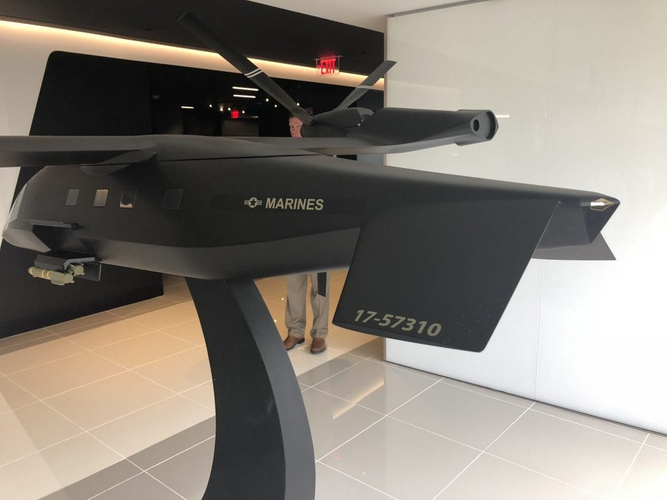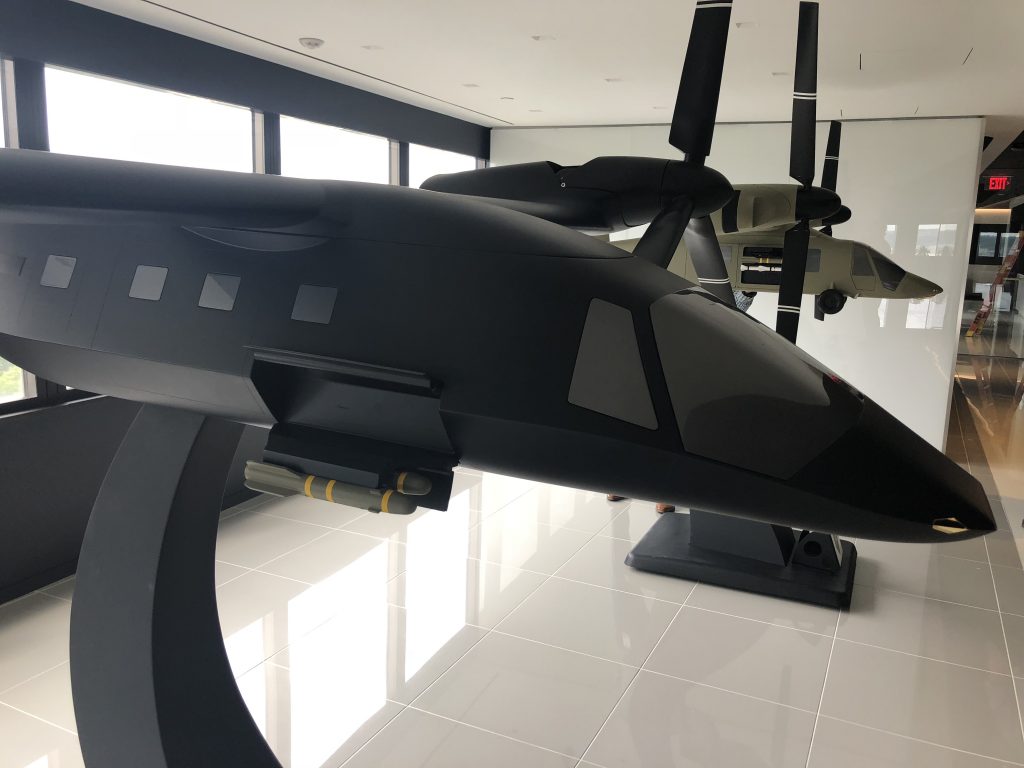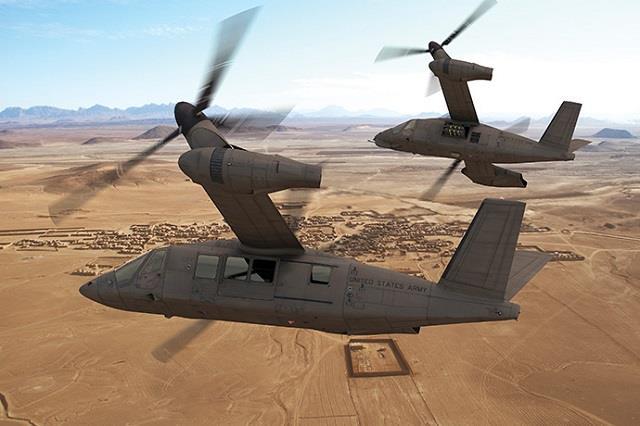- Joined
- 25 July 2007
- Messages
- 3,873
- Reaction score
- 3,176
... I believe it is an MX-15. It is the primary targeting sensor for the AH-1.
That's not a Wescam turret, it is the same LM AN/AAQ-30 TSS as the Marines have on their AH-1Zs.
... I believe it is an MX-15. It is the primary targeting sensor for the AH-1.
The U.S. Department of Defense has announced a contract award to Bell, a division of Textron, for the production and delivery of 12 AH-1Z Viper attack helicopters to the government of Nigeria.
@yasotay found your dream ride!Unofficial single seat Cobra design for A2A from U.S. Army Aviation Digest1984.
Actually single seat Cobra sounds great till you have to fight with it. Same@yasotay found your dream ride!
It is more likely that the USMC will use FLRAA as it will be able to keep up with MV-22B and has better range than the Invitus was designed for.When the time comes for the USMC to replace the Cobra, the Bell 360 Invictus is an excellent choice in my opinion. Bell may have had a plan all along based upon the Invictus size and configuration.
And AGM-122 Sidearms. Still don't understand why we haven't made another batch of those... Make them HOBS or datalink to get pointed into whatever radar is lighting you up and let fly. "How dare you point a radar at me?!? SMITE!!"And this came out at almost the exact time that the USMC was designing the AH-1W upgrade of its AH-1Ts* - which included wiring, fire control, etc for AIM-9 Sidewinders!
The AH-1Ws started shipping to USMC squadrons in March 1986.
* 43 AH-1Ts upgraded, 179 AH-1Ws new-build.
No, the Marines need something that can keep up with the Ospreys (and even pull ahead of them, they're talking 350+kt sprint speeds!). It'll be based on the V280 or a narrow-fuselage attack version.When the time comes for the USMC to replace the Cobra, the Bell 360 Invictus is an excellent choice in my opinion. Bell may have had a plan all along based upon the Invictus size and configuration.
Too large? No, I don't think so. It might actually be too small, it's only got a 5500lb payload and an AH1Z carries some 5800lbs of ordnance. The UH1Y is actually 1000lbs lighter than the AH1Z empty weights, too, so an attack AW609 is probably going to be down on weapons compared to a Zulu.Is the AB-609 too large to refuselage into a BAT-like vehicle? And would a single-seat BAT be counterproductive per Yasotay's comments above?
Need something with the speed of a V280, even if it's got a different fuselage.Does not make any sense replacing the cobra with a V280, two different types of missions, V280 not an attack/fighting platform like the Cobra. Might as well replace the Apache with a V280 then.
And AGM-122 Sidearms. Still don't understand why we haven't made another batch of those...
That would be again, a new platform. A V280 with those large props, speed yes, agility no. V280 great for FLRAA mission. The AH-1Z is a mini-Apache and the Invictus could give the USMC a nice successor, plus Bell basically has an Invictus built, no argument intended.Need something with the speed of a V280, even if it's got a different fuselage.
The AH-1Z is a mini-Apache and the Invictus could give the USMC a nice successor, plus Bell basically has an Invictus built, no argument intended.



Most now expect unmanned platforms to do the up close and personal engagements. That said much longer ranged munitions are being developed for high intensity warfare that precludes manned platforms from going "toe-to-toe" with threat air defenses. This means that it could be acceptable to operate just above the trees vice in between them.I have a hard time envisioning how a gunship version of the V-280 or even the much earlier BAT would operate. For a very long time now attack helicopters have been expected to fight at NOE altitudes using terrain to mask their position. While the high speed of tilt-rotors has an obvious benefit in getting the aircraft to the right area it doesn't offer much when you're actually trying to sneak behind hills and trees to pop up and launch some Hellfires.
I can easily envision using something like a gunship V-280 or BAT as an escort for the tilt-rotors performing the air assault mission but I have my doubts as to how well they would do in the job of sniping at tanks and other targets. I know the assessment of how the V-280 compares to the V-22 at low speeds and altitudes has been very positive, but that isn't really a direct comparison to the AH-1 or AH-64.
Was not expecting that...I am not surprised to have seen no mention of the AH-1AF (Advanced Functions) here in the forum. It was a quickly dismissed proposal from Bell Helicopter in 1979 to amalgate many of the features of the ongoing Army aviaiton programs into the existing AH-1 platform. Most notable was the soft in-plane rotor system that would later be used on the OH-58D and AH-1Z. It also included the sensor package being developed for the AH-64A. This package would also be proposed later to the Bundeswehr aero scount program by Bell. Larger wings that would allow for the standard attack load and include wingtip launchers for Stinger missiles for chance engagements expected in a European war. Larger side panels that would later show up on AH-1W were also included for all of the increased avionics associated with the new sensors. A particularly strange part of the proposal was inclusion of the mast mounted site for scout work and buddy lasing. Due to the significant increase in weight the proposal included a change to the T-701A engine that was developed for the UH-60 and AH-64. The new dynamic components led to a realization that the tail rotor would need more authority so Bell proposed a four bladed tail rotor for the significantly increased torque from the 701A. Also of note the 20mm cannon was replaced by the original M-134 mini-gun and 40mm launcher as it was deemed an adequate suppression weapon capability at reduced weight over the 20mm gatlin gun.
Hi folks,I am not surprised to have seen no mention of the AH-1AF (Advanced Functions) here in the forum. It was a quickly dismissed proposal from Bell Helicopter in 1979 to amalgate many of the features of the ongoing Army aviaiton programs into the existing AH-1 platform. Most notable was the soft in-plane rotor system that would later be used on the OH-58D and AH-1Z. It also included the sensor package being developed for the AH-64A. This package would also be proposed later to the Bundeswehr aero scount program by Bell. Larger wings that would allow for the standard attack load and include wingtip launchers for Stinger missiles for chance engagements expected in a European war. Larger side panels that would later show up on AH-1W were also included for all of the increased avionics associated with the new sensors. A particularly strange part of the proposal was inclusion of the mast mounted site for scout work and buddy lasing. Due to the significant increase in weight the proposal included a change to the T-701A engine that was developed for the UH-60 and AH-64. The new dynamic components led to a realization that the tail rotor would need more authority so Bell proposed a four bladed tail rotor for the significantly increased torque from the 701A. Also of note the 20mm cannon was replaced by the original M-134 mini-gun and 40mm launcher as it was deemed an adequate suppression weapon capability at reduced weight over the 20mm gatlin gun.
As all of the current attack helicopters being developed are designed with tandem seating, I would submit that the visibility afforded by this arrangement is not overlooked by the design teams. A grand argument is more so over whether reconnaissance helicopters should also use tandem seating or not. The designs are pretty much 50/50 between the two. Most of the remaining OH-58D that have transitioned into AH-64, will tell you they preferred the side-by-side arrangement. The visibility from the front seat of the Apache is abysmal compared to say AH-1Z. Forward visibility is also horrible. An interesting point made as to the preference of side-by-side, is that Scouts spend a lot of time getting shot at. With a tandem aircraft the "observer" might not realize in time that the pilot has been incapacitated, whereas if the pilot is sitting next to you there is a much better likelihood that his/her demise will be noted.One aspect of tandem cockpit attack helos that is being overlooked is that it gives both pilot and gunner clear and equal views from both sides of the airframe - while side-by-side cockpits have a significantly-reduced view on the "off side" for both crew - that would have to be offset by a large-field sensor system.
Did not realize that the view from the front seat of the Apache was that bad...As all of the current attack helicopters being developed are designed with tandem seating, I would submit that the visibility afforded by this arrangement is not overlooked by the design teams. A grand argument is more so over whether reconnaissance helicopters should also use tandem seating or not. The designs are pretty much 50/50 between the two. Most of the remaining OH-58D that have transitioned into AH-64, will tell you they preferred the side-by-side arrangement. The visibility from the front seat of the Apache is abysmal compared to say AH-1Z. Forward visibility is also horrible. An interesting point made as to the preference of side-by-side, is that Scouts spend a lot of time getting shot at. With a tandem aircraft the "observer" might not realize in time that the pilot has been incapacitated, whereas if the pilot is sitting next to you there is a much better likelihood that his/her demise will be noted.
Did not realize that the view from the front seat of the Apache was that bad...
In many attack helicopters the front seat crew member is seated lower in the fuselage and have significant sensor controls in front and around them. They are lower so that the rear aircrew member can see over the front seaters helmet.The gunner sitting in the front no doubt gets a much better view.
In many attack helicopters the front seat crew member is seated lower in the fuselage and have significant sensor controls in front and around them. They are lower so that the rear aircrew member can see over the front seaters helmet.
It is not universal, but it is a potential factor.
That is true. Likewise the AH-64A. I imagine the same for A-129. RAH-66 was, to my knowledge, the first platform where the sight technology allowed the crew stations to be interchangeable.Wasn't the gunner-forward positioning in the AH-1 also driven by the difficulty of routing direct-view optics from the nose to the back seat?
The Eurocopter Tiger has the pilot is placed in the forward position, with the gunner seated behind.That is true. Likewise the AH-64A. I imagine the same for A-129. RAH-66 was, to my knowledge, the first platform where the sight technology allowed the crew stations to be interchangeable.
